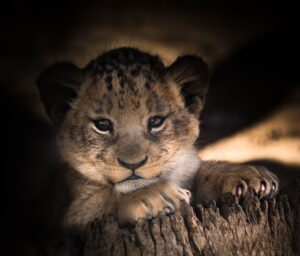Baeugi News Hub
Your source for the latest news and insightful articles.
Why Owning an Exotic Pet is Like Having a Tiny Dinosaur
Discover why owning an exotic pet feels like having a tiny dinosaur—unique traits, quirky behaviors, and endless fascination await!
The Dinosaur Within: Understanding the Unique Care of Exotic Pets
Exotic pets, often likened to dinosaur companions due to their unique characteristics and requirements, demand specialized care that goes beyond the conventional. Owners must first understand the specific needs of these animals, which can include tailored diets, appropriate habitat conditions, and regular veterinary check-ups. For example, reptiles such as iguanas and snakes require specific temperature and humidity levels to thrive, while exotic birds might need a diet rich in varied seeds and fruits to maintain their health. Failing to meet these needs can lead to serious health issues, underscoring the importance of research and preparation before bringing an exotic pet into your home.
Additionally, prospective exotic pet owners should consider their commitment level, as many of these animals can live for decades. Unlike typical pets, their care often involves significant financial and time investments. Understanding the behavioral traits of these animals is also crucial; for instance, certain species may display territorial behavior or require social interaction to thrive. It's advisable to consult with experienced exotic pet owners or veterinarians who specialize in these animals to ensure appropriate care practices are in place. Embracing the dinosaur within means not only providing a home but also understanding the ancient instincts and needs that accompany these extraordinary creatures.

Are Exotic Pets the Modern-Day Dinosaurs? Exploring Their Fascinating Nature
In recent years, the trend of keeping exotic pets has surged, leading some to ponder whether these unique creatures are the modern-day dinosaurs. Many exotic pets—such as reptiles, birds, and even some mammals—share characteristics with prehistoric animals, showcasing striking appearances and behaviors that seem to echo a time long past. For instance, reptiles like iguanas and chameleons bear a resemblance to their ancient ancestors, capturing the imagination of pet owners and enthusiasts alike. As they explore the fascinating nature of these animals, individuals become increasingly aware of the complexities involved in their care and environment, raising questions about their ethical implications.
Owning an exotic pet can be both rewarding and challenging. Unlike traditional pets like cats and dogs, these animals often require specialized care, specific habitats, and a deeper understanding of their natural behaviors. For instance, many owners may not realize that exotic pets can have unique dietary needs and social behaviors, leading to the need for tailored environments that replicate their wild counterparts. Just as dinosaurs dominated their ecosystems, exotic pets bring their own charm and mystique, transforming them into living connections to a distant past. As we dive deeper into the captivating world of these creatures, one must ask: are we merely enthusiasts, or are we actively participating in a modern-day dino-mania?
From Scales to Feathers: What Owning an Exotic Pet Teaches Us About Our Planet's Prehistoric Creatures
Owning an exotic pet, whether it be a reptile or a bird, can provide us with a fascinating glimpse into the lives of our planet's prehistoric creatures. These animals, with their unique adaptations and behaviors, echo the characteristics of ancient species that once roamed the Earth. For instance, reptiles, which often bear resemblance to dinosaurs, illustrate the survival mechanisms that have persisted through millions of years. Observing these creatures can spark curiosity about evolution and the environmental changes that have shaped their existence, reminding us that every pet carries a piece of our planet's history within them.
Furthermore, the responsibility of caring for an exotic pet teaches us important lessons about biodiversity and conservation. Many exotic species are endangered due to habitat loss and climate change, echoing the challenges faced by prehistoric creatures. By learning how to care for these unique animals, we cultivate a deeper appreciation for the delicate balance of our ecosystems. As we become more engaged with wildlife conservation, we can draw parallels between our modern pets and their ancient relatives, recognizing the importance of protecting the biodiversity that has evolved over millions of years.